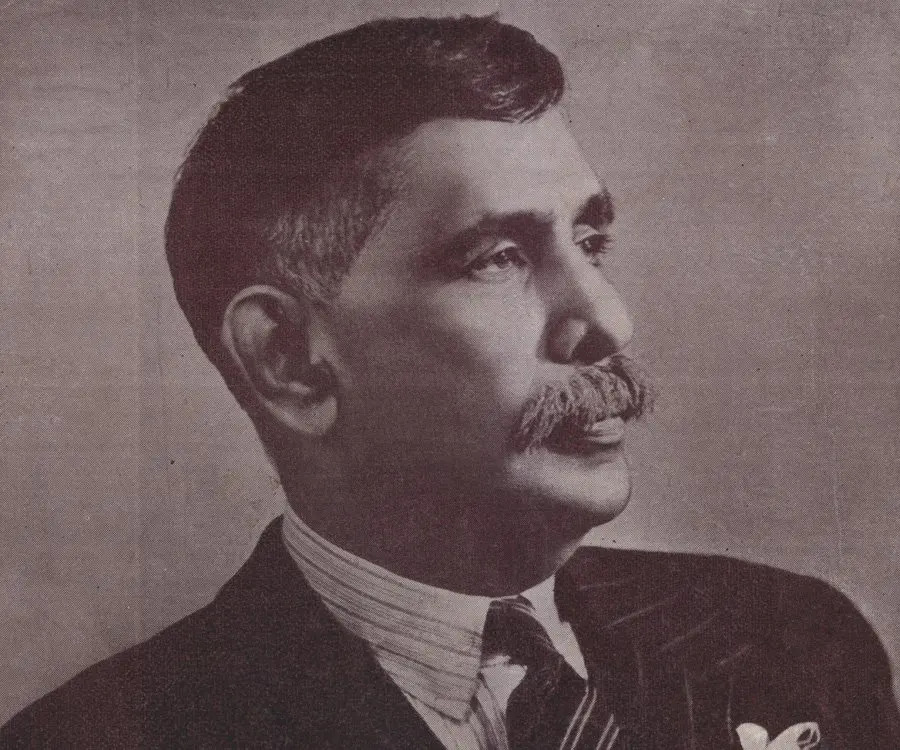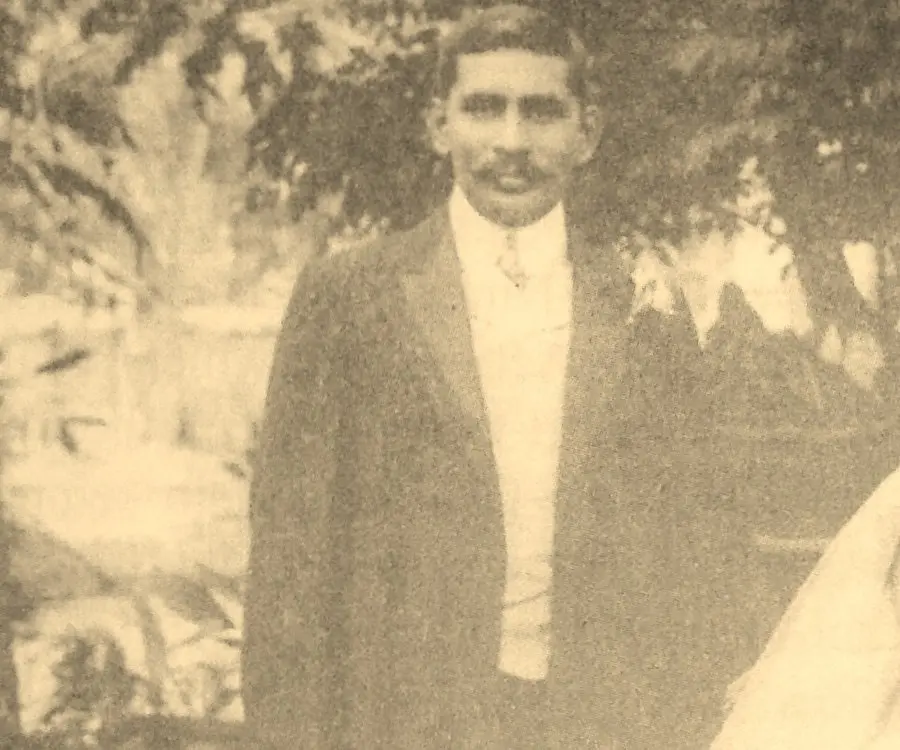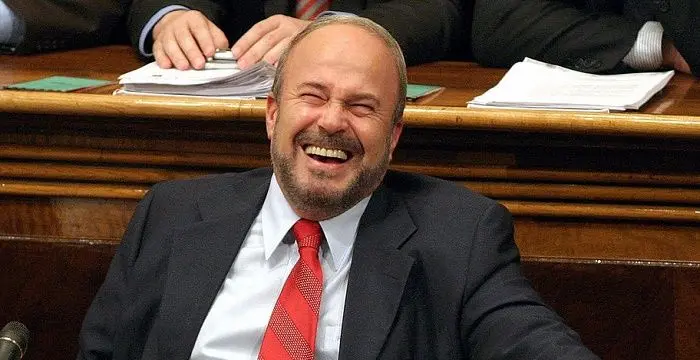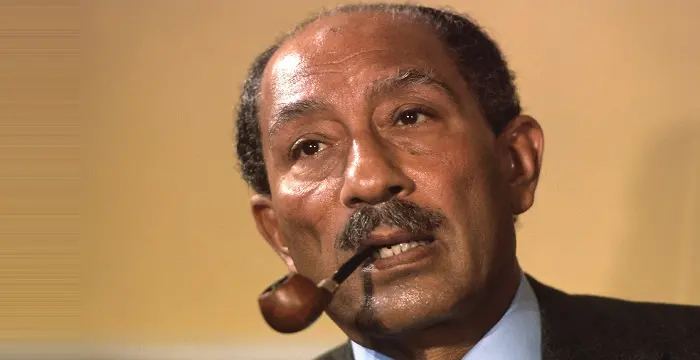
D. S. Senanayake - First Prime Minister of Sri Lanka, Birthday and Personal Life
D. S. Senanayake's Personal Details
Don Stephen Senanayake respected as the ‘Father of the Nation’, was the first Prime Minister of Ceylon (now Sri Lanka)
| Information | Detail |
|---|---|
| Birthday | October 20, 1883 |
| Died on | March 22, 1952 |
| Nationality | Sri Lankan |
| Famous | Leaders, Political Leaders, Prime Ministers, First Prime Minister of Sri Lanka |
| Spouses | Molly Dunuwila |
| Siblings | Fredrick Richard Senanayake |
| Childrens | Dudley Senanayake |
| Universities |
|
| Founder / Co-Founder |
|
| Birth Place | Mirigama |
| Religion | Buddhism, Catholicism, Anglicanism |
| Gender | Male |
| Sun Sign | Libra |
| Born in | Mirigama |
| Famous as | First Prime Minister of Sri Lanka |
| Died at Age | 68 |
D. S. Senanayake's photo
Who is D. S. Senanayake?
Don Stephen Senanayake respected as the ‘Father of the Nation’, was the first Prime Minister of Ceylon (now Sri Lanka) post independence. He is remembered for his leadership in the peaceful political movement aimed at achieving independence from the British. On February 4, 1948, the nation was granted self-rule as the Dominion of Ceylon. Senanayake became the first Prime Minister of independent Ceylon in 1948 and held the office till his death. Prior to premiership, he was elected to the Legislative Council of Ceylon. He represented the ‘Ceylon National Congress’ in the newly created ‘State Council of Ceylon’ and later served as the Minister of Agriculture and Lands. He initiated ‘Land Development Ordinance’ that aided at cultivation of barren lands by implementing various irrigation schemes. He made efforts to modernise agriculture and also stressed on developing cooperatives. He played an instrumental role in effecting many leading hydro-power and irrigation projects such as ‘Gal-Oya’, ‘Inginiyagala’ and ‘Udawalawa’. He later left ‘Ceylon National Congress’ and founded the ‘Union National Party’ (‘UNP’). He was respected as a Prime Minister by all communities including the Sinhalese, Tamils and Muslims.
// Famous Prime Ministers
Edi Rama
Edi Rama is the current Prime Minister of Albania. Check out this biography to know about his childhood, life, achievements, works & timeline.
Leo Varadkar
Cam Leo Varadkar is the current Taoiseach—the Prime Minister—of the Republic of Ireland. Check out this biography to know about his childhood, family life, achievements and other facts about his life.
Fatos Nano
Fatos Nano is an Albanian politician who served as Prime Minister of Albania for several times. Check out this biography to know about his childhood, life, achievements, works & timeline.
Childhood & Early Life
He was born on October 20, 1884, in a village called Botale in the Western Province, Sri Lanka. He belonged to a devoted Buddhist family of Mudaliyar Don Spater Senanayake and Dona Catherina Elizabeth Perera Gunasekera Senanayake as one of their four children.
He had two brothers, Fredric Richard Senanayake and Don Charles Senanayake and one sister, Maria Frances Senanayake.
He completed his education from the renowned private Anglican boys school ‘S. Thomas' College’ in Mutwal.
Thereafter he joined the Surveyor General's Department as a clerk. Later he left the job to join his father’s rubber plantation.
Career
He and his two brothers were associated with the ‘Temperance Movement’ which was formed in 1912, inspired by Buddhism and anti-colonialism. The movement had a leading role in the ‘National Independence Movement’ in Ceylon.
In 1914, at the outset of the ‘First World War’, the three brothers joined ‘Colombo Town Guard’, a regiment linked with ‘Ceylon Defence Force’ (predecessor of Sri Lanka Army).
During the 1915 riots, the brothers faced confinement without any charges as Sir Robert Chalmers, the then British Governor held the ‘Temperance Movement’ as rebellious. As the British resorted to remorseless brutal actions to suppress the riots, the educated middle class of the country emerged to initiate the modern independence movement.
In 1919, his brother Fredric Richard formed ‘Lanka Mahajana Sabha’ party and he along with Don Charles became leading members of the party that played a significant role in the independence of Ceylon.
He was elected from Negambo in the Western Province of Ceylon, as a member of the ‘Legislative Council of Ceylon’ in 1924.
Following Fredrick Richard’s death while on a trip to Bodh Gaya, India, in 1925, he stepped in to lead the independence movement.
The ‘Legislative Council of Ceylon’ was replaced with ‘State Council of Ceylon’ by the ‘Donoughmore Constitution’ in 1931 and Don Stephen represented ‘Ceylon National Congress’ in the latter and became Minister of Agriculture and Lands.
He strived to resolve the agricultural issues and in this endeavour formed an agricultural policy, ‘Land Development Ordinance’, to address rice problems in the country.
The various irrigation schemes of the policy ensured that barren lands were brought under cultivation. His sincere effort in launching the policy fetched him respect and appreciation and saw him being re-elected in 1936. He went on to serve as minister for fifteen years and attempted to modernise agriculture.
He played an active role in supply and control of food during ‘Second World War’ in the capacity of a Ceylon war cabinet member and as Minister of Agriculture and Lands. As the nation experienced scarcity of rice due to reduction in foreign supplies, he initiated tenfold import of wheat flour by commencing trade with Brazil and Egypt.
He developed close bond with Dr Ivor Jennings, who served ‘Ceylon University College’ as its Principal. An authority in constitutional law, Dr Ivor Jennings later became advisor of Don Stephen and gave him valuable suggestions on constitutional reforms aimed at attaining independence of Ceylon.
He became ‘Leader of the House’ of the ‘State Council of Ceylon’ on December 2, 1942 and held the position till July 4, 1947. He also became Vice Chairman of the Board of Ministers of the council in 1942.
When the ‘Whitehall Declaration’ was made by the British Government on May 26, 1943, regarding constitutional change in Ceylon and attracted submissions from ministers, the Governor called for a commission to stop the operations of ministers.
Not consenting to the resolution on independence undertaken by ‘Ceylon National Congress’, he left the party and submitted his proposal of dominion status to the commission. The commission accepted his submissions which were published in 1944 in the Sessional Paper XIV.
The ‘Soulbury Commission’ was set up in 1944 and the following year he visited London and met George Hall, the Secretary of State for the Colonies. This was followed by acceptance of his submissions that led to self-government for Ceylon, albeit short of independence.
In 1946, he resigned his ministry and on September 6 that year, he established a new party, the ‘United National Party’ (‘UNP’) by bringing together three right pro-Dominion, right-leaning parties from the Sinhalese, Muslim and Tamil communities. The same year he refused knighthood, though showed his appreciation for the cooperation extended by the British.
After a few negotiations, his proposals for change in constitution and independence were accepted by the British government. This was followed by parliamentary elections from August 23 to September 20 in 1947. After a couple of months, in December, the nation witnessed passage of the ‘Independence Bill of Ceylon’ and on 11th day of the month, he signed agreements with British government that opened a new door of independence to Ceylon.
The ‘UNP’ went into a coalition with ‘All Ceylon Tamil Congress’ and formed a government and he became the first Prime Minister of Ceylon on September 24, 1947. He also held Ministry of Defence and External Affairs.
As Prime Minister, he was respected by most of the communities of Ceylon. He applied multipurpose scheme, ‘Gal Oya’ to colonize uninhabited regions by resettling around 2, 50,000 people. He emphasised on development of hydroelectric power to mitigate non-occurrences of coal, oil and gas deposits in the country.
In 1950, the British inducted him in the ‘Privy Council’.
In 1951 he also took charge of the Ministry of Health and Local Government.
Personal Life & Legacy
He married Molly Dunuwila and the couple had two sons.
Their elder son Dudley Shelton Senanayake, born on June 19, 1911, followed his father’s footsteps and succeeded his father to become the second Prime Minister of Ceylon on March 26, 1952. Dudley Shelton later held premiership for two more terms.
The couple’s second son Robert Parakrama Senanayake was born on April 8, 1913.
On March 22, 1952, Senanayake succumbed to a stroke that he suffered while riding a horse at the ‘Galle Face green’.
His grandson Rukman Senanayake, a former cabinet minister, presently serves as Member of Parliament. Rukman currently serves ‘Union National Party’ as it’s Assistant Leader.
// Famous Political Leaders
Edi Rama
Edi Rama is the current Prime Minister of Albania. Check out this biography to know about his childhood, life, achievements, works & timeline.
Khalifa bin Zayed Al Nahyan
Sheikh Khalifa bin Zayed Al Nahyan is the current President of the United Arab Emirates (UAE). Check out this biography to know about his birthday, childhood, family life, achievements and fun facts about him.
Leo Varadkar
Cam Leo Varadkar is the current Taoiseach—the Prime Minister—of the Republic of Ireland. Check out this biography to know about his childhood, family life, achievements and other facts about his life.
D. S. Senanayake biography timelines
- // 20th Oct 1884He was born on October 20, 1884, in a village called Botale in the Western Province, Sri Lanka. He belonged to a devoted Buddhist family of Mudaliyar Don Spater Senanayake and Dona Catherina Elizabeth Perera Gunasekera Senanayake as one of their four children.
- // 19th Jun 1911 To 26th Mar 1952Their elder son Dudley Shelton Senanayake, born on June 19, 1911, followed his father’s footsteps and succeeded his father to become the second Prime Minister of Ceylon on March 26, 1952. Dudley Shelton later held premiership for two more terms.
- // 1912He and his two brothers were associated with the ‘Temperance Movement’ which was formed in 1912, inspired by Buddhism and anti-colonialism. The movement had a leading role in the ‘National Independence Movement’ in Ceylon.
- // 8th Apr 1913The couple’s second son Robert Parakrama Senanayake was born on April 8, 1913.
- // 1914In 1914, at the outset of the ‘First World War’, the three brothers joined ‘Colombo Town Guard’, a regiment linked with ‘Ceylon Defence Force’ (predecessor of Sri Lanka Army).
- // 1915During the 1915 riots, the brothers faced confinement without any charges as Sir Robert Chalmers, the then British Governor held the ‘Temperance Movement’ as rebellious. As the British resorted to remorseless brutal actions to suppress the riots, the educated middle class of the country emerged to initiate the modern independence movement.
- // 1919In 1919, his brother Fredric Richard formed ‘Lanka Mahajana Sabha’ party and he along with Don Charles became leading members of the party that played a significant role in the independence of Ceylon.
- // 1924He was elected from Negambo in the Western Province of Ceylon, as a member of the ‘Legislative Council of Ceylon’ in 1924.
- // 1925Following Fredrick Richard’s death while on a trip to Bodh Gaya, India, in 1925, he stepped in to lead the independence movement.
- // 1931The ‘Legislative Council of Ceylon’ was replaced with ‘State Council of Ceylon’ by the ‘Donoughmore Constitution’ in 1931 and Don Stephen represented ‘Ceylon National Congress’ in the latter and became Minister of Agriculture and Lands.
- // 1936The various irrigation schemes of the policy ensured that barren lands were brought under cultivation. His sincere effort in launching the policy fetched him respect and appreciation and saw him being re-elected in 1936. He went on to serve as minister for fifteen years and attempted to modernise agriculture.
- // 26th May 1943When the ‘Whitehall Declaration’ was made by the British Government on May 26, 1943, regarding constitutional change in Ceylon and attracted submissions from ministers, the Governor called for a commission to stop the operations of ministers.
- // 1944Not consenting to the resolution on independence undertaken by ‘Ceylon National Congress’, he left the party and submitted his proposal of dominion status to the commission. The commission accepted his submissions which were published in 1944 in the Sessional Paper XIV.
- // 1944The ‘Soulbury Commission’ was set up in 1944 and the following year he visited London and met George Hall, the Secretary of State for the Colonies. This was followed by acceptance of his submissions that led to self-government for Ceylon, albeit short of independence.
- // 1946In 1946, he resigned his ministry and on September 6 that year, he established a new party, the ‘United National Party’ (‘UNP’) by bringing together three right pro-Dominion, right-leaning parties from the Sinhalese, Muslim and Tamil communities. The same year he refused knighthood, though showed his appreciation for the cooperation extended by the British.
- // 1947After a few negotiations, his proposals for change in constitution and independence were accepted by the British government. This was followed by parliamentary elections from August 23 to September 20 in 1947. After a couple of months, in December, the nation witnessed passage of the ‘Independence Bill of Ceylon’ and on 11th day of the month, he signed agreements with British government that opened a new door of independence to Ceylon.
- // 24th Sep 1947The ‘UNP’ went into a coalition with ‘All Ceylon Tamil Congress’ and formed a government and he became the first Prime Minister of Ceylon on September 24, 1947. He also held Ministry of Defence and External Affairs.
- // 1950In 1950, the British inducted him in the ‘Privy Council’.
- // 1951In 1951 he also took charge of the Ministry of Health and Local Government.
- // 22nd Mar 1952On March 22, 1952, Senanayake succumbed to a stroke that he suffered while riding a horse at the ‘Galle Face green’.
// Famous Leaders
Edi Rama
Edi Rama is the current Prime Minister of Albania. Check out this biography to know about his childhood, life, achievements, works & timeline.
Tecumseh
Tecumseh was a Native American leader of the Shawnee clan. This biography profiles his childhood, life and timeline.
Khalifa bin Zayed Al Nahyan
Sheikh Khalifa bin Zayed Al Nahyan is the current President of the United Arab Emirates (UAE). Check out this biography to know about his birthday, childhood, family life, achievements and fun facts about him.
Anwar Sadat
Anwar Sadat was the third President of Egypt and has been awarded the Nobel Prize for his peace initiatives. To know more about his childhood, career, profile and timeline read on the following biography.
Leo Varadkar
Cam Leo Varadkar is the current Taoiseach—the Prime Minister—of the Republic of Ireland. Check out this biography to know about his childhood, family life, achievements and other facts about his life.
Swami Vivekananda
Swami Vivekananda was the chief disciple of Sri Ramakrishna, and was responsible for awakening India spiritually. Check this biography to know in detail about his life, profile and timeline.
D. S. Senanayake's FAQ
What is D. S. Senanayake birthday?
D. S. Senanayake was born at 1883-10-20
When was D. S. Senanayake died?
D. S. Senanayake was died at 1952-03-22
Where was D. S. Senanayake died?
D. S. Senanayake was died in Colombo, Sri Lanka
Which age was D. S. Senanayake died?
D. S. Senanayake was died at age 68
Where is D. S. Senanayake's birth place?
D. S. Senanayake was born in Mirigama
What is D. S. Senanayake nationalities?
D. S. Senanayake's nationalities is Sri Lankan
Who is D. S. Senanayake spouses?
D. S. Senanayake's spouses is Molly Dunuwila
Who is D. S. Senanayake siblings?
D. S. Senanayake's siblings is Fredrick Richard Senanayake
Who is D. S. Senanayake childrens?
D. S. Senanayake's childrens is Dudley Senanayake
What was D. S. Senanayake universities?
D. S. Senanayake studied at S. Thomas' College, Mount Lavinia
Which company or organization was founded by D. S. Senanayake?
D. S. Senanayake was the founder/co-founder of United National Party
What is D. S. Senanayake's religion?
D. S. Senanayake's religion is Buddhism, Catholicism, Anglicanism
What is D. S. Senanayake's sun sign?
D. S. Senanayake is Libra
How famous is D. S. Senanayake?
D. S. Senanayake is famouse as First Prime Minister of Sri Lanka








